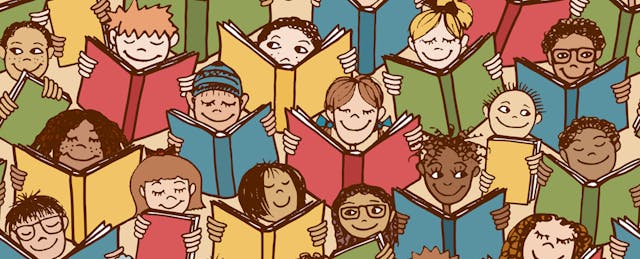Guided reading has become increasingly popular, and for good reason; it works. The opportunity to work with children in small groups, instruct in a way that’s laser focused on students’ level of development, and directly address individual challenges allows educators to go beyond one-size-fits-all teaching approaches and set a more solid foundation for overall literacy.
While most educators have a grasp on the fundamentals of guided reading, successful implementation presents unique challenges such as group management, differentiating lessons for students, finding on-level books and designing materials for stations to address students needs. Preparation and planning needs to extend beyond curriculum and lesson plans. True success lies within the execution—finding a way to focus on each individual group while also engaging the entire classroom.
Routine is Key to Guided Reading Success
Children tend to be more engaged when a routine is established. I’ve found that this is especially true in getting kids to respond to guided reading, since part of the learning is done independently. I teach third grade, which happens to be a test year for students in Texas, so I understand the level of scrutiny educators face when tasked with using guided reading to get results. My routine has helped me and my students improve literacy across the board. Since we’ve implemented guided reading, we’ve seen test scores increase significantly.
Here’s some advice for creating your own routine:
Break lesson plans down into sections and execute in the same order, every time. I start each lesson with a question, then go into reading, then ask a skill-based question, like why each detail in a book supports the main idea.
I then end the session with an open ended or multiple choice question, leaving time to provide feedback on the students’ answers. Students come to expect this order and therefore are more attentive throughout the process and ready to participate and answer my questions at each stage. More participation keeps the students engaged and provides a foundation for building good discussion habits.
Dedicate the same amount of time every day. Most school districts allot a certain amount of time teachers can dedicate to guided reading each week. As educators, most of us probably think it deserves more time. This can make it tempting to divide the time up in bigger chunks on select days of the week. I’ve found that I get better results when I dedicate time daily. For my classroom, this means I do it for an hour a day, although I’d prefer 90 minutes. Due to the time constraint, I’ve adapted my lesson plans to focus more on the skill and feedback portions of each session.
Create independent learning stations for students to build on key literacy skills. Most educators will tell you that the most challenging part of guided reading is keeping other students engaged while you work with each group. Stations will be successful only if students are strategically formed, which works best by using reading level data to group students of similar skill levels.
In my classroom, I have created various literacy skill stations inspired by The Daily Five framework. Students can engage in independent learning that strengthens skills taught in guided reading sessions, and know what to expect while I am working with a group of their peers. For example, I have a station dedicated to writing development, one focused on independent reading and others designed to build spelling and vocabulary skills. For even more consistency, I sometimes even create a designated pathway to direct students from one station to the other, so stations are experienced in the same order, every time.
Turn to online educational tools and resources to meet your needs. Technology can be your best friend when it comes to implementing an effective guided reading program—for both students and educators. But the biggest question you need to ask is “does this tool give me what I need to be successful?” Educators need routine as much as the students do, and incorporating too many tools into the mix can leave you unorganized and students confused. To ensure that your skills evaluations, lesson plans, reading materials and resources are consistent, focus on finding a few key solutions. There are a lot of tools to choose from and every teacher has a favorite; mine is Reading A-Z.
Features I consider to be most valuable in a guided reading educational tool include individual fluency tests, reading inventories, and common assessments directly aligned with the guided reading. Other important features include compliance with Common Core and other state standards, the ability to pair books with each student’s individual skill level (not just based on generic reading levels) and multi-lingual options (which is particularly important for me since I teach in a Spanish/English bilingual classroom).
Work first on your routines and small group management, use data to group your students and plan your guided reading lessons, find the resources that are aligned to your lesson objective and develop stations that help students master the objective that they are working on. Guided reading can seem overwhelming at first, but once you settle into your routine, you’ll start to see the overwhelming benefits. My students show daily progress and my routine allows me to be 100 percent focused on the group in front of me, knowing all students are engaged and learning for the entire guided reading block.


